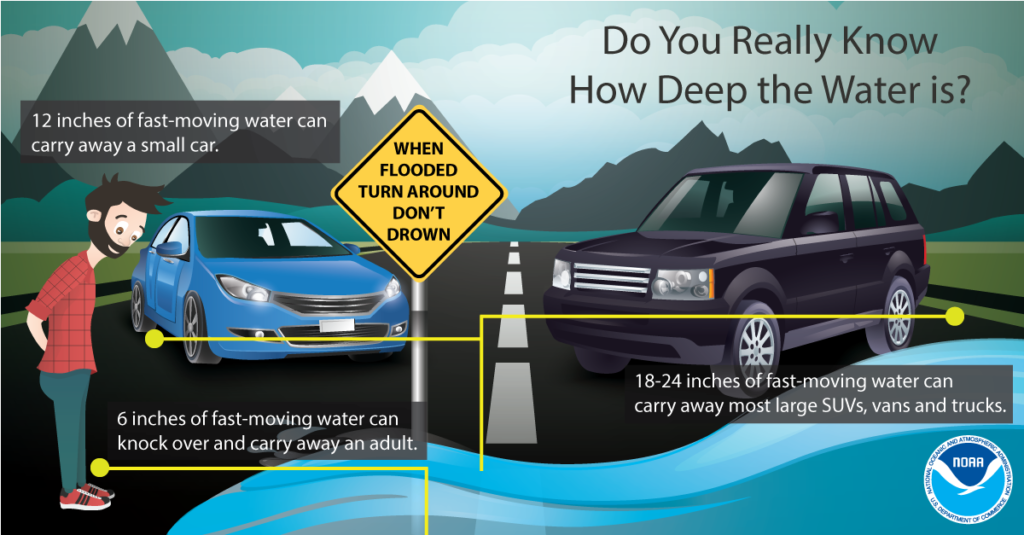What Is Flash Flooding? Understanding Causes, Dangers, and Myths
Flash flooding is one of the most dangerous and misunderstood weather hazards. Unlike slower-rising river floods, flash floods happen suddenly, often with little to no warning, and can turn deadly in just minutes. In fact, flash floods are considered the deadliest weather-related hazard in the United States, claiming more lives each year than tornadoes, hurricanes, or lightning.
In this article, we’ll break down what flash flooding is, what causes it, why it’s so destructive, and the common myths that lead people to underestimate the risks.
What Is Flash Flooding?
A flash flood is a rapid and violent surge of water that typically results from intense rainfall, a dam or levee failure, or the sudden release of water held back by ice or debris jams. What sets flash floods apart is their speed. They can form in a matter of minutes or just a few hours after the trigger event, leaving little time to react or escape.
These floods often move with astonishing force, carrying debris such as rocks, tree limbs, and even pieces of buildings. The powerful current can sweep away vehicles, uproot trees, wash out roads, and damage critical infrastructure. Because of their sudden onset and destructive potential, flash floods are one of the most unpredictable and life-threatening weather events.
Characteristics of Flash Floods
The defining characteristic of flash flooding is its rapid onset. Unlike traditional flooding that builds over days, flash floods can happen almost immediately after heavy rain or a dam break. The rainfall that triggers them is usually intense and concentrated in a short period, overwhelming both soil absorption and man-made drainage systems.
Floodwaters move quickly and with immense power, often carrying debris that increases the risk to anyone in their path. This destructive force means that even normally dry areas, such as stream beds or urban streets, can turn into torrents of water in minutes. The element of surprise is what makes flash floods so dangerous, as people frequently underestimate just how quickly conditions can deteriorate.
Common Causes of Flash Flooding
Heavy rainfall is by far the most frequent cause of flash flooding. Slow-moving thunderstorms or repeated storms over the same location can dump inches of rain in a short period, creating more water than the ground or drainage systems can handle. Terrain also plays a role—canyons, valleys, and steep hillsides funnel water downhill, increasing its speed and intensity.
Soil conditions can make flooding worse. Hard-packed or already saturated soil does not absorb water efficiently, forcing rain to run off into streams and low-lying areas. Wildfire burn scars create another problem, as charred ground becomes water-resistant and unable to soak up rainfall. Urban areas are especially vulnerable since concrete and asphalt prevent water from being absorbed, quickly overwhelming storm drains.
Although less common, dam or levee failures unleash catastrophic amounts of water downstream, creating instant flash floods. Similarly, rivers blocked by ice or debris can suddenly give way, releasing stored water in a torrent.
Why Flash Floods Are So Dangerous
The dangers of flash flooding come from both the speed and the sheer force of the water. Just six inches of moving water can knock a grown adult off their feet, and as little as one to two feet can carry away most cars and SUVs. Floodwaters often hide washed-out roads, making them even more treacherous for drivers.
On top of the physical force, the water itself is hazardous. It often carries debris like logs, rocks, and even pieces of buildings, which can cause injury or block escape routes. Floodwaters may also be contaminated with sewage, gasoline, or chemicals, creating long-term health risks. Downed power lines can electrify floodwaters, adding another deadly hazard. For these reasons, the National Weather Service promotes one simple but powerful rule: Turn Around, Don’t Drown.

Myths That Put People at Risk
Unfortunately, several misconceptions about flash flooding cause people to underestimate the danger:
Myth: “Homeowner’s insurance covers flood damage.”
Fact: Standard policies usually exclude floods. Coverage must be purchased separately, often through the National Flood Insurance Program (NFIP).
Myth: “It’s safe to drive through just a few inches of water.”
Fact: Only 12 inches of water can carry away most cars. Two feet can move larger vehicles.
Myth: “Trucks and SUVs are safe in floodwaters.”
Fact: Large vehicles can still float and be swept away.
Myth: “If it’s not raining here, I’m safe.”
Fact: Flooding can occur miles downstream from where the rain actually falls.
Myth: “Flash floods only happen near rivers.”
Fact: Urban areas, dry stream beds, and canyons can all experience sudden flooding.
Myth: “It’s possible to outrun floodwaters on foot.”
Fact: Six inches of fast-moving water can sweep an adult off their feet.
How to Stay Safe During a Flash Flood
The most important safety step is to move to higher ground as soon as a flash flood warning is issued. Never drive or walk into floodwaters, no matter how shallow they may appear. If your vehicle stalls in rising water, abandon it immediately and seek higher ground. Being caught inside a car during a flood is one of the deadliest mistakes people make.
Nighttime floods are especially dangerous since it’s harder to see washed-out roads or rising water. Always stay tuned to NOAA Weather Radio, local alerts, or trusted apps to get the latest watches and warnings. If you are trapped inside a building, move to the highest floor or even the roof if necessary until rescuers arrive.
Related Reading: Flood Warnings vs. Watches
Understanding flash flood alerts is critical to staying safe. If you’re not sure about the difference between a flood watch and a flood warning, read our full guide here: Flood Warning vs. Watch: What’s the Difference?
Flash flooding is fast, destructive, and often underestimated. By understanding the causes, recognizing the risks, and avoiding common myths, you can better protect yourself and your family. Always remember the golden rule: Turn Around, Don’t Drown. It’s a simple phrase that saves lives every year.